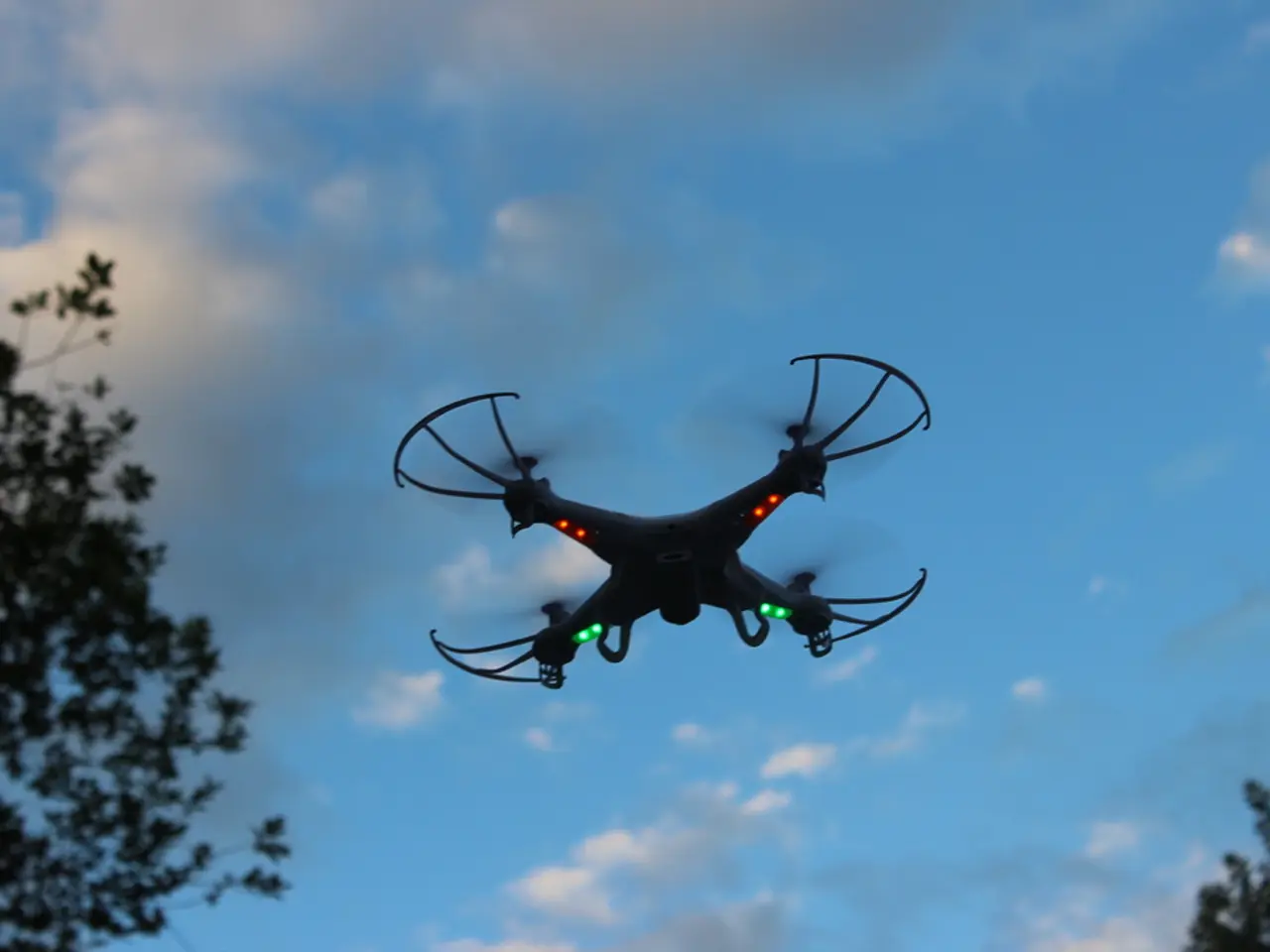Industries Embracing Thermal Drone Technologies in the Year 2025
Thermal drones, once a novelty, have become integral tools across various industries, revolutionising the way businesses operate. From public safety and security to agriculture and infrastructure, these aerial machines are making a significant impact in 2025.
In the realm of public safety and security, thermal drones are proving invaluable. They perform surveillance over vast areas, especially in low-light or smoke-obscured environments, helping monitor critical infrastructure, emergency situations, and border security. This reduces the need for extensive ground teams and enhances rapid situational awareness.
Industrial inspection and maintenance are another area where thermal drones shine. Thermal sensors detect temperature anomalies indicating equipment faults, leaks, or structural issues, enabling preventive maintenance before costly failures. Drones can inspect hazardous or inaccessible zones such as power lines, oil rigs, and factories, reducing downtime and increasing safety.
Agriculture is another sector benefiting from thermal imaging. It helps monitor crop health, irrigation efficiency, and pest infestations by revealing temperature variations that indicate stress or disease, allowing for precision interventions that improve yields and sustainability.
Logistics and warehousing are also reaping the benefits of thermal drones. They support inventory management by locating misplaced or overheated goods, performing safety checks, and securing warehouses through enhanced surveillance capabilities that operate day and night.
Infrastructure and construction industries are leveraging thermal drones for surveying, mapping, and monitoring structural integrity during construction projects. They detect heat leaks in buildings, ensuring energy efficiency, and help maintain the structural integrity of buildings and construction projects.
Technological advancements, such as improved battery life and thermal management in drone systems, are enabling longer, safer, and more efficient drone operations suitable for diverse industrial applications.
The advantages of thermal drone technology are manifold. They support preventive maintenance models by spotting early signs of failure, helping organisations avoid costly downtime and extend asset life. Faster inspections are another advantage, as they can scan large areas in a fraction of the time it takes to inspect them manually.
Operational cost savings are a significant benefit, as thermal drones reduce labor hours, minimise equipment damage, and avoid system failures. Predictive maintenance is central to minimising downtime and preserving equipment lifespan in industrial settings, and thermal drones provide a fast, non-intrusive way to scan critical systems without shutting down operations.
Regulatory compliance is also a benefit, as thermal drones offer traceable, timestamped data to support reports and audits in industries with strict safety and environmental standards. In 2025, thermal drones are becoming standard tools in factories, warehouses, and industrial plants for detecting overheating motors, conveyor systems, bearings, and electrical panels.
Improved safety is a key benefit of thermal drone technology, as it allows operators to collect data from a safe distance in dangerous or hard-to-reach environments. As thermal drone technology continues to evolve, we can expect to see even more industries adopting these innovative tools for real-time thermal data gathering, risk reduction, productivity improvement, and operational cost savings.








